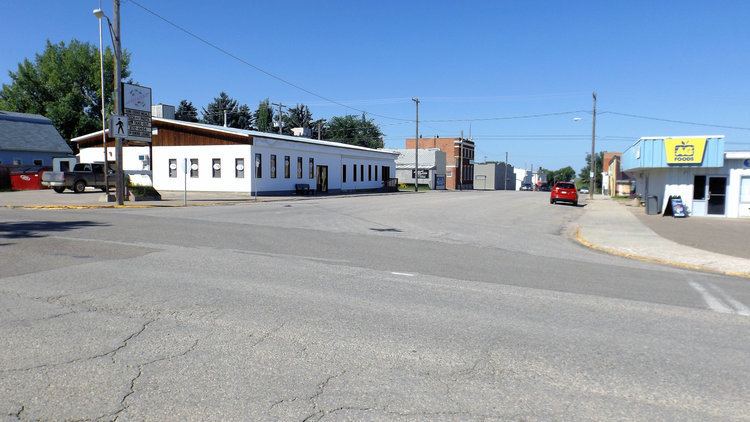Gull Lake is a small town west of Swift Current situated on the junction of the Trans-Canada Highway and Highway 37. It is identified by some by the wind turbines that can be seen in the distance while driving along the Trans-Canada Highway. The SunBridge Wind Farm is near Gull Lake.
The history of the Gull Lake community dates back to 1906, when a development company Conrad and Price acquired and surveyed the town site and subdivided it into blocks. Unlike most other towns located along the Canadian Pacific Railway main line, Gull Lake was not planned and established by the railroad. In fact, there was some animosity from the railroad towards this town that bucked their plan. The origin of the name Gull Lake comes from the Cree word for the area, Kiaskus (kiyaskos) which means "little gull".
From 1906 to 1909 there was no municipal government or authority other than Conrad and Price: the company had full jurisdiction over civic affairs. In 1909 the citizens of Gull Lake had their community incorporated as a village.
Before 1906 the town of Gull Lake was part of the famed Ranch 76 that stretched over most of southwestern Saskatchewan. There are still a few buildings in the town that were part of the ranch.
Agriculture is the top employment field with many surrounding farms and ranches, with some work in the oil fields as well.
Regional Attractions:
Big Muddy Badlands, a series of badlands in southern Saskatchewan and northern Montana along Big Muddy Creek. They are found in the Big Muddy Valley, a cleft of erosion and sandstone along Big Muddy Creek. The valley is 55 kilometres (34 mi) long, 3.2 kilometres (2.0 mi) wide and 160 metres (520 ft) deep. The valley was formed when it was part of an ancient glacial meltwater channel that carried great quantities of water southeastward during the last ice age.Cypress Hills Interprovincial Park, an interprovincial park straddling the southern Alberta-Saskatchewan border, located north-west of Robsart. It is Canada's first and only interprovincial park.Cypress Hills Vineyard & Winery, open by appointment only from Christmas until May 14.Fort Walsh, is part of the Cypress Hills Interprovincial Park. As a National Historic Site of Canada the area possesses National Historical Significance. It was established as a North-West Mounted Police (NWMP) fort after and at the location of the Cypress Hills Massacre.Grasslands National Park, represents the Prairie Grasslands natural region, protecting one of the nation's few remaining areas of undisturbed dry mixed-grass/shortgrass prairie grassland. The park is located in the WWF-defined Northern short grasslands ecoregion, which spans across much of Southern Saskatchewan, Southern Alberta, and the northern Great Plains states in the United States. The unique landscape and harsh, semi-arid climate provide niches for several specially adapted plants and animals. The park and surrounding area house the country's only black-tailed prairie dog colonies. Other rare and endangered fauna that can be found in the park include the pronghorn, sage grouse, burrowing owl, ferruginous hawk, prairie rattlesnake, black-footed ferret and eastern short-horned lizard. Flora includes blue grama grass, needlegrass, Plains Cottonwood and silver sagebrush.The Great Sandhills, is a sand dune rising 50 feet above the ground and covering 1,900 square kilometers. Native prairie grass helps keep the sand together. The sand dunes are fringed by small groves of aspen, birch, and willow trees, and by rose bushes, chokecherry and sagebrush. Subjected to strong winds, the dunes are always moving, creating an ever-changing landscape for photographers.Robsart Art Works, opens July 1 to August 28, 2010 from 1 to 4 p.m. and by appointment and features Saskatchewan artists featuring photographers of old buildings and towns throughout Saskatchewan.T.rex Discovery Centre, a world class facility to house the fossil record of the Eastend area started many years before the discovery of "Scotty" the T.Rex in 1994.
